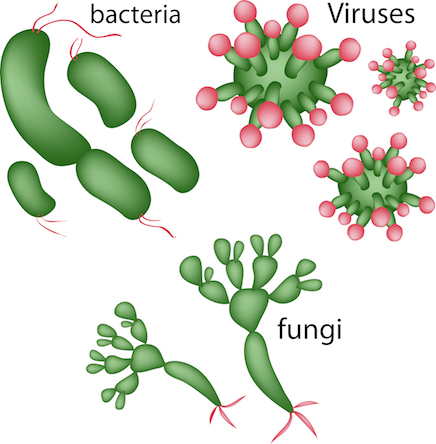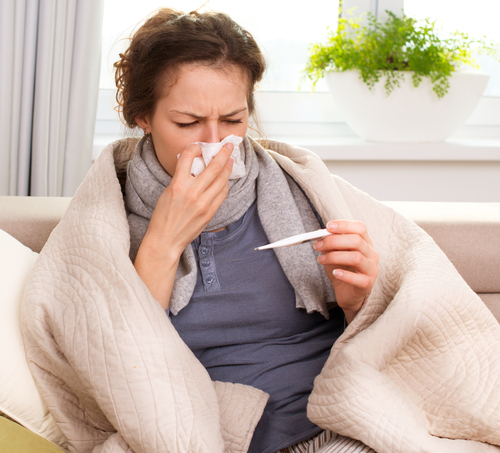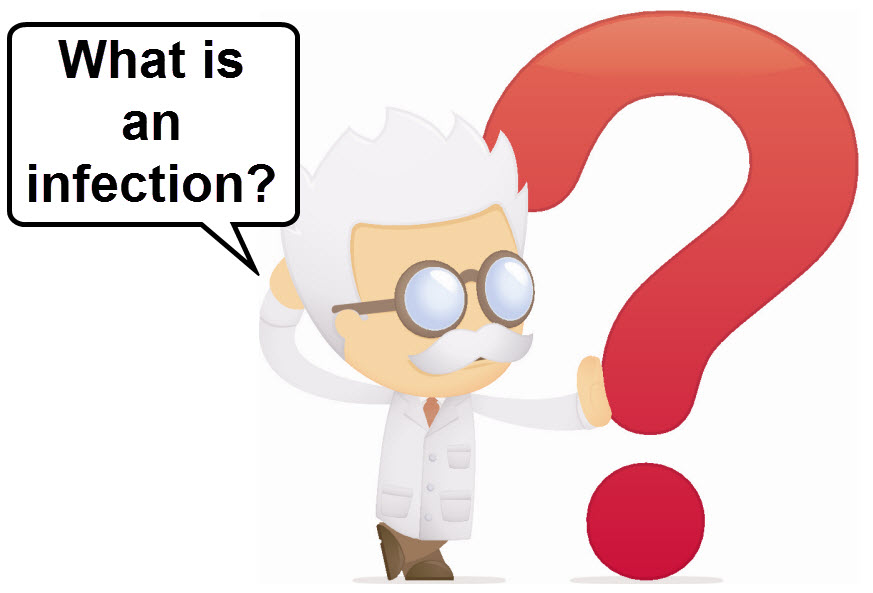Microorganisms are organisms that are so small that we need a microscope to see them. They are so small that they can enter our bodies in a variety of ways. Most microorganisms don't cause us any harm but some can cause disease and are known as pathogens.
There are four main pathogens, viruses, bacteria, fungi and protists.

When someone becomes infected with a pathogen they may display symptoms. For example, if we have been infected with a virus called the rhinovirus, we will start to cough, sneeze and have a runny nose, all symptoms of a common cold. During this period, we are said to be infectious. This means that we could potentially pass this virus on to others. When a person infected with a cold sneezes, they spray lots of tiny water droplets into the air. These droplets contain the virus. If you breathe in these droplets, you could also become infected.

Viruses can cause other diseases such as the dreaded flu, chickenpox and HIV (human immunodeficiency virus).

Bacterial infections are caused by bacteria. These pathogens can cause a host of illnesses. Salmonella and Escherichia coli (E.Coli) are examples of bacteria. Food that has been contaminated with salmonella or E.coli, can lead to food poisoning. Another example is typhoid which occurs if you eat food or drink water that has become contaminated by the Salmonella typhi virus (related to the salmonella bacteria that causes food poisoning). Cholera is caused by drinking water contaminated with Vibrio cholerae bacteria, or by eating food that has been in contact with contaminated water.

Fungi such as dermatophytes cause conditions such as Athlete's foot and ringworm. Symptoms of Athlete's foot can include a dry flaky rash between the toes and spreads through touching infected surfaces, like walking barefoot in communal changing rooms. Ringworm also causes rashes, often circular in shape and is passed on through close contact with an infected person or animal and infected objects such as towels or bedsheets. Yeasts are another example of fungi and can cause illnesses such as thrush.
Protists are made up of cells called protozoa. Malaria is caused by the Plasmodium protist which is spread by mosquitos. When sucking blood from an infected person the mosquito ends up transferring the protist to others. Malaria can cause fever, vomiting and headaches. To avoid getting malaria, we would have to avoid getting bitten by mosquitos for example using mosquito repellent and sleeping under mosquito nets.

We can reduce the spread of pathogens through our behaviour. We could sneeze into a tissue and make sure we throw it away after use. We can wash our hands regularly with soap and water, or use hand sanitisers after coughing or sneezing, before eating or preparing food and after using the bathroom. These will destroy pathogens lingering on our hands and potentially spreading. We can also avoid really busy and crowded places. Recently the use of face masks has increased due to the coronavirus (COVID-19) pandemic.
All of these actions can help to stop the spread of pathogens.

In this activity, we will look at the causes of infections, how these pathogens enter our body and what steps we can take to avoid infection.

